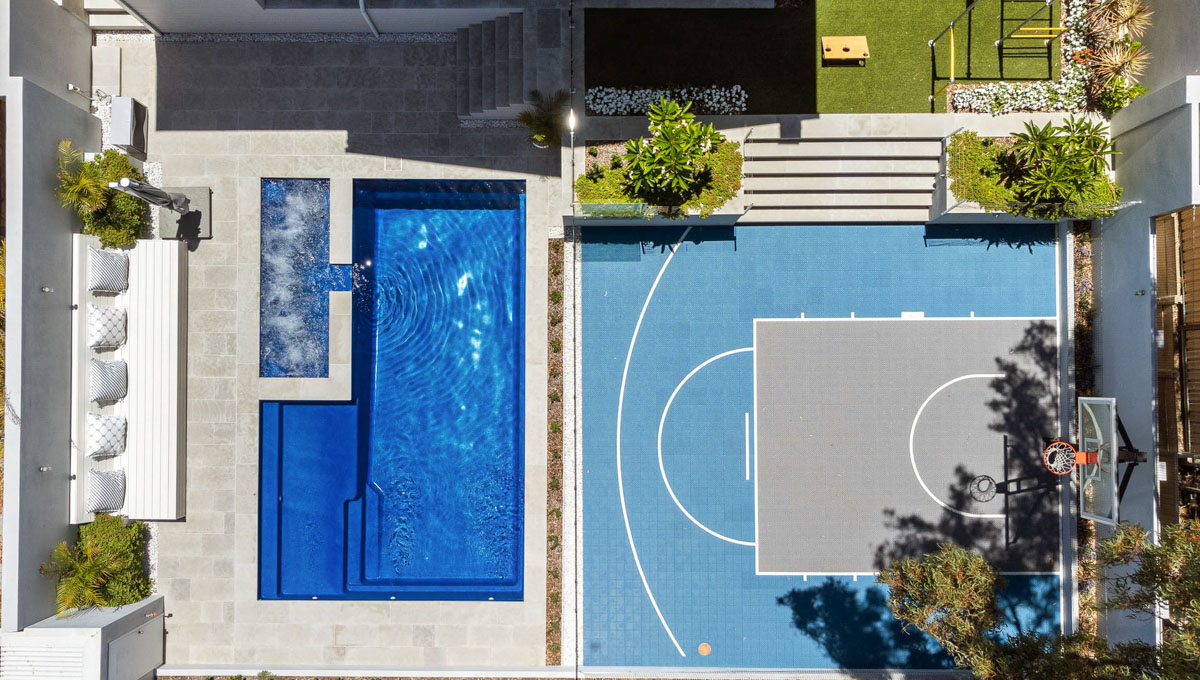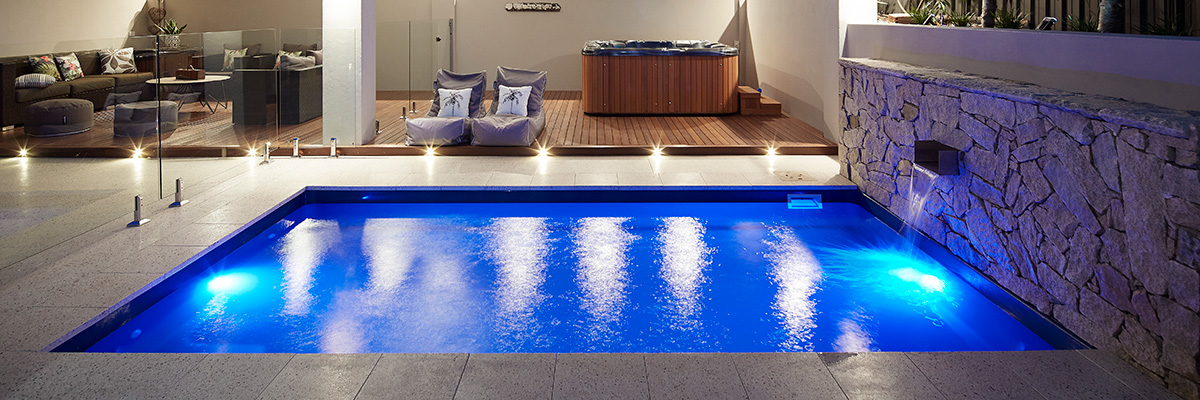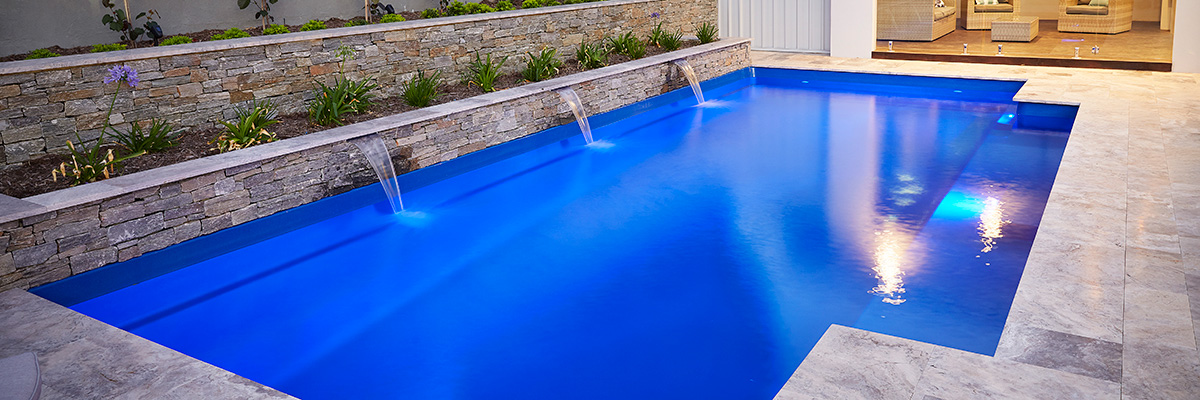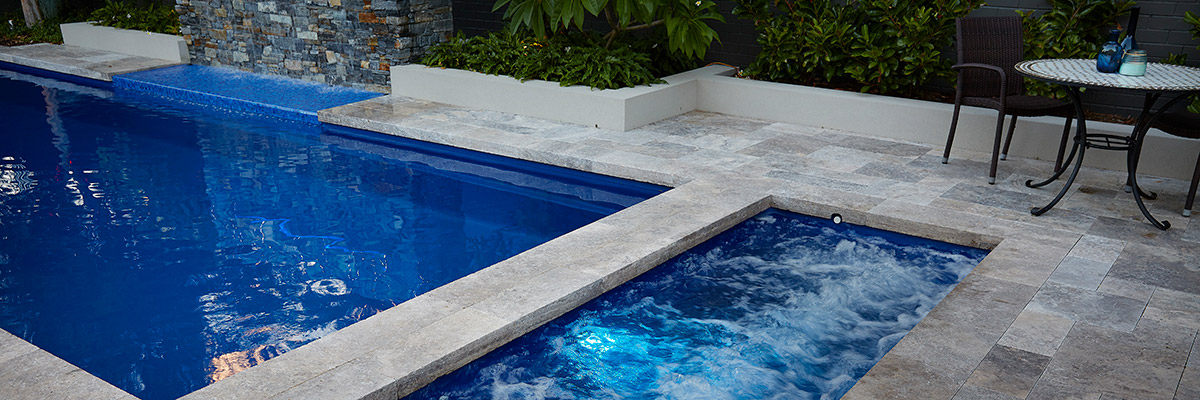FIBREGLASS VS CONCRETE
What Type of Swimming Pool Should You Buy?
What Is The Best Type Of Swimming Pool For My Home?
So you’re thinking about getting a swimming pool for your backyard that will provide years of enjoyment, laughter, and fun for your family. No doubt, owning a swimming pool will have an excellent and lasting effect on your life. Notwithstanding, to make the most out of this experience, it’s important you understand what your options are and which type of pool will best suit your needs. Even though we are one of the world’s largest manufacturers of in-ground fibreglass pools here at Barrier Reef Pools, we’ve decided to give you the honest and unbiased answers you need to respond to this crucial question.
Option #1: Above Ground Pool
Advantages:
There is one definitive advantage of an above ground swimming pool – cost. Without question, an above ground pool is going to cost less than any in-ground pool (assuming you don’t build a large deck around it, at which point, you could have just as easily bought an in-ground pool).

Disadvantages:
For most folks, the biggest problem of above ground pools is their aesthetics. Some can view an above ground pool as an eyesore. Often subdivisions do not allow for their construction within their covenants. Even with a deck built entirely around them, an above ground pool will usually never add to the appearance of your home and yard. In fact, it will likely be a deterrent. Another disadvantage of an above ground pool is their depth and design limitation. Generally speaking, most above ground pools come in one of 3 shapes—circle, oval, or rectangle. Above ground pools simply are not built to last a long time. Their metals walls can oxidise and rust quickly, and the majority of structures will typically fail in the 8-15 year mark. As a result of this, an above ground pool usually is not factored in as an improvement when a house is being valued and can be a deterrent when trying to sell a house.
Option #2: Vinyl Liner Inground Pools
Advantages:
If you’re looking to get an inground pool and have a very limited budget, a vinyl liner may be the best choice for you. Their material costs are low and as a result, a vinyl liner pool will in most cases cost $5,000 to $10,000 less initially than their concrete or fibreglass counterparts. With a vinyl liner pool, you have very few limits when it comes to shape and size. With today’s technology, you can make the pool as deep and as curvy/straight/large as you’d like.

Disadvantages:
The biggest problem with a vinyl liner in-ground pool is the liner itself. The material is a polymer, and it will break down over time and have to be replaced. Also, the liner can tear easily or become undone from the sides, causing it to fall slowly into the water. On average (and regardless of what “warranties” say), you can expect your inground vinyl liner to last between 7-12 years, with the average cost of replacement (labour, liner, and water) in the $3,000 to $7,000 range, depending on the size/shape of the pool.
Another disadvantage of a liner pool is the aesthetic look. Generally speaking, a standard liner pool installation will look much “cheaper” and “temporary” than a fibreglass or concrete pool. As a result, a vinyl liner inground pool typically doesn’t add value to homes, like fibreglass or concrete pool would do of the same size. In many countries now, vinyl liner pools are no longer sold, and fibreglass pools and concrete pools are the swimming pools of choice.
Option #3: Concrete Pools
Advantages:
The main benefit of a concrete pool is the fact that it can be designed and customised to fit any size, shape, or depth you’d like. From a visual standpoint, a concrete pool can look nice because of these customizable features. Concrete pools add value to the property and are an asset when the owner looks to sell the home.

Disadvantages:
Far and away, the biggest drawback to a concrete pool is the high maintenance required to keep these pools lovely, bright, and clean. Not only does a concrete pool require more chemicals and brushing during the season, but it also goes through an expensive resurface on average every 8-15 years.
Another disadvantage of concrete pools is its roughness of the surface. Not only does this roughness lead to acid washing and natural algae growth, but also it can be very hard on children’s feet, and cause them to bleed after a few hours of playing in the pool. The naturally rough surface of a concrete pool also means the pool will need to filtrate for much longer every day as the surface in extremely pours and requires a far greater time to sanitise compared to a fibreglass pool; this makes concrete pool far more expensive to run.
The water in a concrete pool is also much colder than that in a fibreglass pool; the difference is quite surprising & we suggest you test a few pool options out first so you can verify this for yourself. Concrete pools also traditionally take a long time to build and can be frustrating for homeowners as they have a permanent construction zone in their yard for on average 3-4months.
Concrete pools are not ideally suited for salt chlorination. Although salt chlorinators can be installed on a concrete pool, they will require more maintenance and will need resurfacing earlier than if traditional water sanitising was in place. Given the many amazing benefits of salt chlorination, this is a disadvantage for concrete pools.
Option #4: Fibreglass
Advantages:
Generally speaking, it’s now an accepted fact that fibreglass pools require the least amount of maintenance of any swimming pool on the market today. With their smooth, non-porous surfaces, it’s hard for algae to grow on fibreglass and when used with a salt chlorinator, the minimal maintenance is astounding for many pool owners. Fibreglass pools are also warmer: Many existing pool owners who have owned both types of pools report that fibreglass pools are much warmer. Check out online forums where multiple Australian-based users state that their fibreglass pools heat up faster than concrete and retain heat for longer. Fibreglass swimming pools can be installed in a very short period. The main reason being is that the actual swimming pool is fabricated off site meaning that once the excavated hole is finished. The completed swimming pool can be lowered into the hole, and all that is then required is for the decking and landscaping to finished around the swimming pool. Fibreglass swimming pools can be fully installed and operational in as little as five days. Barrier Reef Pools have made tremendous advancements in the colour technology of fibreglass swimming pools. This new colour range is available in 6 distinct colours, and each has a spectacular sparkle finish. The surface is smooth and as a result children and adults, skin is not damaged by the pool surface. Through Barrier Reef Pools advanced manufacturing process we have improved flexural and tensile strength enabling us to offer a Lifetime Structural Warranty and a Lifetime Internal Warranty. These warranties are far superior to anything provided by above ground, vinyl liner and concrete pools. Fibreglass swimming pools come from a mould; The benefit of this is that the design schematic is exactly what the swimming pool will look like once finished. We hear so many customers complain about concrete pools after they are constructed because the design is formed on site and in so many cases the design envisaged by the client is not what is finally built by the concrete pool builder. With fibreglass swimming pools you know exactly the design and sizing are enabling you to plan your backyard landscaping around that exact layout. One of the great advantages of a fibreglass swimming pool is the range of designs that are now available. Barrier Reef Pools offers WA’S largest range of fibreglass pools & broad spectrum of sizes to suit a variety of home architecture. Our designs are based on substantial market research to ascertain the various features and benefits customers want from a swimming pool.

Disadvantages:
Disadvantages: The only problem of fibreglass pools is if you are looking for a design that is not available from our range. Fibreglass swimming pools come from a mould that is an expensive item to make. Therefore, we are limited to the number of shell designs. Barrier Reef Pools undertakes extensive market research to ensure that we can offer a range of designs to suit 95% of customer requirements however if you want a design that is a little out of the ordinary then you may need to consider concrete swimming pools.
Conclusion
We firmly believe that the Barrier Reef Pools composite fibreglass swimming pool is the best available swimming pool structure for 95% of customer requirements. We urge people on a budget to look at fibreglass before above ground and vinyl liner pools. Even if you need to wait a year to save up the difference in the long term both regarding maintenance and increased value in your home, it will be the best decision for you in the long run. Contact us today to get started!